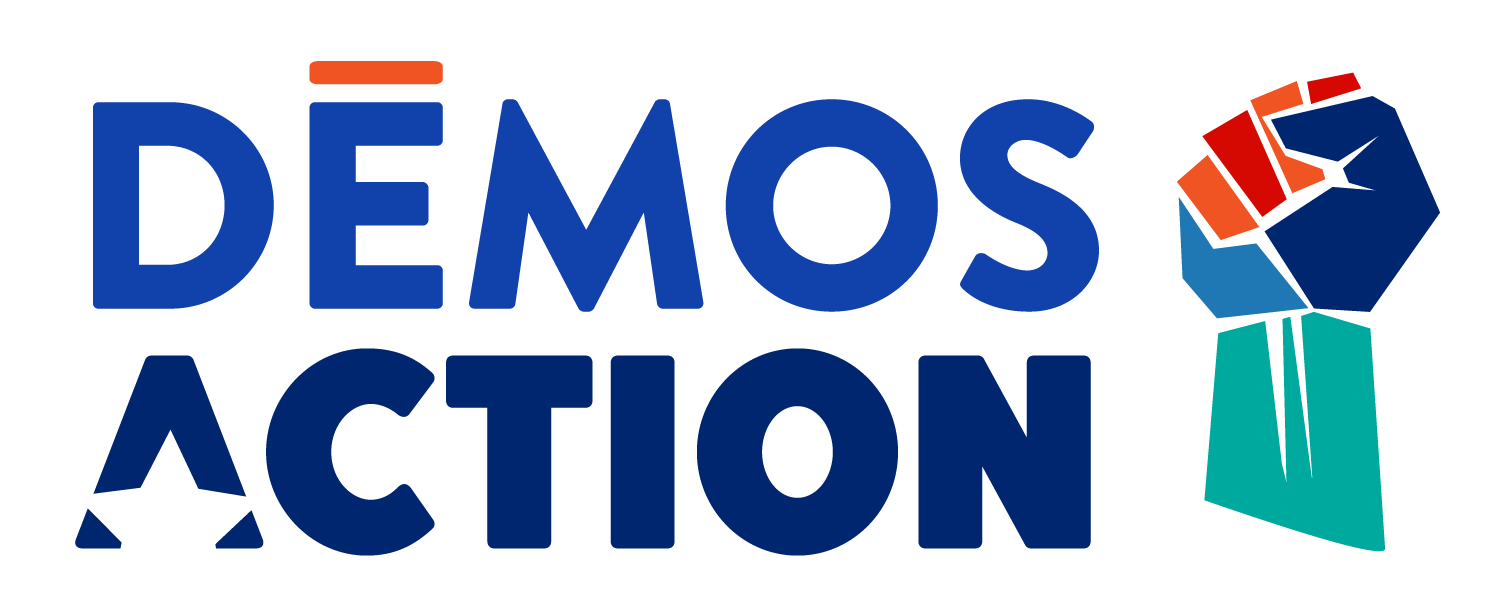Race-Class Narrative: Methodology and Results Overview
The Race Class Narrative (RCN) was a year-long collaboration between communications and neurolinguistics expert Anat Shenker-Osorio of ASO Communications, author Ian Haney-Lopez (“Dog Whistle Politics”), two polling firms (Brilliant Corners and Lake Research), and Demos Action. In this next phase of the work, Demos Action is deploying this research where it matters most: on the campaign battlefield.
Winning today requires engaging our people of color base and persuading the middle: we have to inspire our people to action and contend against the opposition’s strategic racism. There isn’t a place in this country that is immune to the politics of divisive racism. We need to call out these tactics everywhere, and invite people to racial solidarity in order for our progressive values to thrive. This research is a response to the subtle and overt exploitation of fears of racial difference and appeals to white identity by right-wing candidates at all levels of government. A progressive response to these tactics is crucial for the future of our ideas and a functioning government in the United States. Our goal for this document is to give you a quick-but-thorough overview of the depth of the research, the topline results, and a quick snapshot of further independent verification of these results.
Methodology
This research was conducted via a comprehensive, five-phase process that lasted more than a year. These are short summaries of the five phases:
Language Analysis, where we studied how everyone from elected leaders to hip-hop artists talk about and understand economic and racial justice.
Interview Analysis, where we asked leaders and advocates to describe how they feel and think about these issues. As Anat puts it, “A great message doesn’t say what’s already popular; a great message makes popular what needs to be said.” These interviews gave us a more detailed understanding of how leaders think, and were the foundation of the ideas we tested.
Qualitative Explorations, where we studied two-person conversations, and ran an extensive series of in-person and online focus groups. in order to test initial hypotheses about effective messaging.
Quantitative Surveys, featuring more traditional polling-like surveys, including online dial testing to gauge moment-to-moment responses to the various messages.
A Experimental Canvass, where our partners deployed these messages at people’s doors in Minnesota.
In the quantitative phase, we considered the sample as three broad categories: our base (nationally, around 23%); the opposition (around 18%); and persuadables, by far the biggest group at around 59% of adults. Persuadables demonstrated receptivity toward our views and policy solutions and to those of the opposition. It is critical for persuadable voters to hear inclusive messages about race and class, because if they don’t, they only hear stories that reinforce the opposition’s framing of these issues. Note that these segments were generated ideologically, not based upon partisan identity or demographics.
Results
The bottom line of this research is that we can talk persuasively about race and economic fairness. These are the basic results:
Leaders and candidates who are fighting for a more fair economy can build support for their ideas by naming racial scapegoating as an opposition strategy.Your campaign’s messages should include talking about how intentional division by race and place of origin is used as a barrier to progress, and what the potential is for overcoming it.
Messages that include explicit mention of both race and the tactic of intentional division outperform both our opponents’ fear- and blame-based messages, as well as color-blind economic populist messages.
These messages are effective with a broad range of demographics, and were found to be persuasive for everyone but the most hardened opposition.
These messages are also more effective coming from women and racially diverse leaders. Contrary to the Obama-era conventional wisdom that candidates of color should not talk about race, the performance of these messages actually increased when delivered by candidates of color!
Besides economics, we can use these basic principles to diffuse political attacks about sanctuary cities and fears of gang violence. Trying to out-tough our opponents on immigration is a dead end. Voters are hungry for a new approach to building genuinely safe communities and finding lasting solutions on immigration policy.
In short, we don’t have to cede the territory of race, difference and belonging to forces using race to divide us. We can tell our truths, energize our base, persuade swing voters, and win.
Independent Verification
You may have heard about the verification crisis plaguing the social sciences, where independent replications of numerous experiments prove inconclusive or even invalidate the original findings. And you’d think that with a big, complicated project like this, perhaps verification would be even more difficult. However, four very different organizations (a national Latino-focused polling firm, a data firm doing advanced targeting research, several congressional races, and the DC-based polling firm GQRR) have all independently re-tested elements of our results to the same effects. The final word on whether these messages are ultimately persuasive will only come through your campaigns trying them out, but these instances of independent verification are more reasons to have confidence in doing so.
